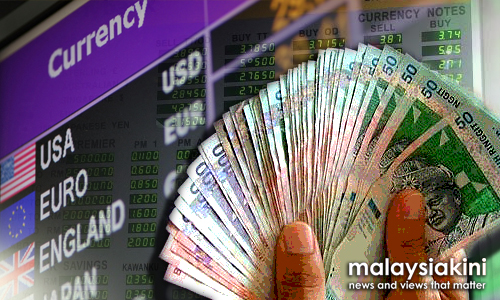
The Malaysian economy cruised on a respectable speed with growth likely to settle at above five percent in the first half of 2017, said economists.
They said the stronger foreign fund inflows had essentially boosted liquidity in the financial system and helped improve the ringgit’s performance as reflected in the liquidity-metrics such as loan-to-deposit and loan-to-fund and equity ratio which dropped to 88.8 percent and 72.9 percent respectively in May 2017 from 89.8 percent and 75.3 percent in December 2016.
"It is somewhat surprising since we were quite pessimistic in the beginning of the year as global markets and economy appear to be fixated with uncertainty in the Trump administration policies as well as ‘Britain Exit’ negotiation and election in Europe.
“But the rise in equity prices seems to have shrugged off such concerns that we have in the first half," Bank Islam Malaysia Bhd’s chief economist Dr Mohd Afzanizam Abdul Rashid told Bernama in an e-mail interview.
Foreign investors had built a solid position on Bursa Malaysia in the first six months of 2017, buying six months in a row, according to MIDF Research in its note recently.
It noted that cumulative foreign buying on the local bourse surged substantially to RM10.2 billion, or an estimated US$2.3 billion in the first half, the highest among Southeast Asian peers.
The next biggest recipient in Southeast Asia was the Jakarta bourse, recording a surplus of US$1.3 billion (US$1 = RM4.28).
Bank Islam's Mohd Afzanizam said event risks such as in the US and the UK, as well as development with regard to crude oil, would intermittently affect the level of the ringgit following risk-aversion attitude among investors.
He expects the ringgit, which had been hovering at the 4.29-level against the US dollar, to seek a range of between RM4.10 and RM4.20 in the second half of 2017.
"We believe that the ringgit/US dollar has room to appreciate further in the second-half of the year. The US Federal Reserve’s (Fed) gradual approach in raising its policy rates would be the main catalyst and this will allow positive carry-on of the ringgit to continue as rates in the US are not likely to go beyond Malaysia’s overnight policy rate in the immediate term," he added.
He pointed out that the expected appreciation of the ringgit could affect export-oriented industries to some extent while event risks such as the conflict in the Gulf Cooperation Council, general election in Germany, US administrative policies including infrastructure spending and protectionism, would intermittently affect market sentiments and the general economy.
MIDF Research chief economist, Kamaruddin Mohd Nor, agrees with Mohd Afzanizam, expecting the ringgit to strengthen gradually towards the RM4.20 level per US dollar by year-end but potentially capped by the change in the US monetary policy and capital flows.
On the overall economy, Bank Islam's Mohd Afzanizam said the economy will experience some form of moderation in the second-half year but capped, with the ongoing implementation of infrastructure projects, lower inflation rate and stable labour markets set to provide the needed catalyst for growth.
"We are looking at gross domestic product (GDP) growth to moderate around 4.4 percent in the second half of 2017 from the expected growth of 5.4 percent in the first six months of the year, bringing the full-year GDP growth at 4.9 percent this year from 4.2 percent in 2016," he added.
The Fed has put the 2017 Federal Funds Rate (FFR) at 1.4 percent in its latest forecast in June and this would imply that the FFR would settle at 1.50 percent by year-end.
“The level is still below the prevailing OPR level of three percent and with the US inflation rate continuing to be below the two percent target,” Mohd Afzanizam said.
He did not expect the FFR would overshoot in the near term.
"Additionally, talks of other major central banks such as European Central Bank and Bank of Japan removing policy accommodation should be viewed positively as this would mean global demand is improving. This is good for trading nations such as Malaysia," he added.
Mohd Afzanizam pointed out that Bank Negara Malaysia might increase interest rate should growth trajectory continued to surprise on the upside.
"Nonetheless, we noticed that the excess capacities in key industries such as the oil and gas and property sectors are quite prevalent. As such, wage growth could be somewhat limited and may not trigger dire consequences to demand-pulled inflation.
“Our house view is that overnight policy rate would be maintained at three percent throughout the year," he said, adding the need for communication on the monetary policy to the general public in order to avoid any misunderstanding should there be a rate increase.
"The stigma is that higher rates are bad for the economy. This should not be the case because, in the truer sense, higher rates would mean the economy is doing well as the economy would require less support from the monetary authority," he said.
- Bernama
- Bernama



No comments:
Post a Comment
Note: Only a member of this blog may post a comment.